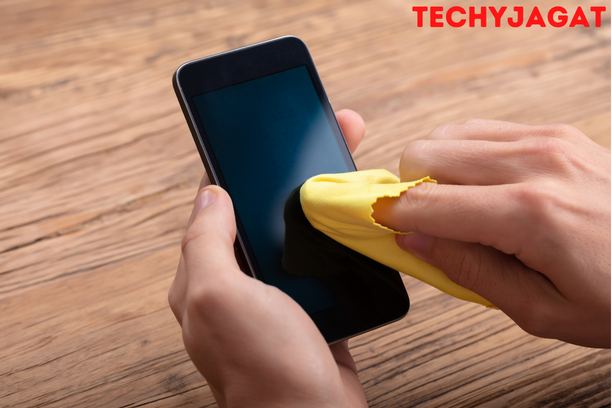Why is my android phone color tinted-Techyjagat

A smartphone owner with a device that has an OLED panel may enjoy the vivid colours, stunning display, deep blacks, and decreased battery consumption that are provided by the inclusion of an OLED, but the one significant problem that affects many (not all) is colour tinting of the display, also known as screen tinting.
We will talk about screen tinting today, focusing on the green tint as it is the most prevalent phenomena, particularly with OnePlus devices. In addition, we’ll identify the causes of screen tinting and provide some solutions. Let’s start the article now without further delay.
How Can I See Green Tinting?
We must first understand whether screen tinting is obvious before talking about what Green Tinting actually is. Given that you cannot discuss a repair for green tint without understanding when and where it happens. Green tinting is often only noticeable in dimly lit environments with the device’s brightness down by roughly 15-20%. Under very few instances, you may be able to notice the tinting in appropriate illumination, but that is very unusual.
Keep in mind that while green tinting is the most frequent, there are various hues that might appear on a screen, with pink tinting being one of the most prominent. Now that you know when green tinting is present, let’s quickly go over what it is.
Green tinting – what is it?
Simply stated, Green Any kind of tinting or hue will appear on an AMOLED display and will be seen when the brightness of the smartphone is between 15 and 20 percent. This does not happen everywhere on the screen; instead, it is more noticeable in certain places. According to Wikipedia’s definition of tinting, which is to subtly alter something’s colour, there has been a change in the display’s hue in certain areas.
Why not explain the benefits of green tinting now that you are aware of what it is. Before talking about the causes of tinting, it’s important to understand how displays are made, how they are calibrated for colour, and how tinting develops on screens.
Why Do Screen Tints Happen?
As previously noted, a different procedure that happens when calibrating the display is what causes screen tinting. Shadow mask patterning is a technique used to enable colour display on OLEDs.
In this technology, every single white pixel on the panel receives a layer of RGB emitting material. Based on the colour to be shown, the RGB deposit filters the white light. Red, Green, and Blue layers, which produce light in the OLED display’s pixels, are stacked in this way. Additionally, this implies that each sub-pixel has its own hue.
This is now becoming much too complicated for us. You may be asking why this is significant as you read all of these display-related stuff. Does this have anything to do with the screen-tinting problem? Definitely, yes, so let’s get on to it without getting too lost in the jargon.
The aforementioned procedure explains why the screen tinting occurred. Using a unique stencil known as the colour mask, the coloured layers previously discussed are applied to the LEDs. A significant inaccuracy in the spacing process of the colour deposits, which results in an uneven output of colour on the display, may occur if the mask, which is crucial to this process, is disrupted and/or not set precisely during the deposition.
Additionally, the tinting does not have to be green given that certain other devices, such the Asus ROG 2, had a reddish tinge in some of its units. Now that you are aware of what screen tinting is and how it develops, you may be asking how to remedy it. Here are a few ways to correct the screen tinting.
Also Read: How to Screenshot On Andriod
Fix 1: Send the gadget back and request a replacement.
Returning your smartphone is the easiest way to correct screen tinting. You could sometimes simply be unfortunate and obtain a faulty product. If so, save your phone box instead of throwing it away and contact the service centre to request a replacement. Usually, the manufacturer is aware of these problems, and the service centre expert will evaluate the item and give a replacement when you show them the screen tinting. The simplest method for removing screen tinting is this.
Fix 2: Adjust the display’s calibration
If the whole display is tinted, it is not screen tinting but rather a display that has been incorrectly calibrated. To correct this, you may use a simple tool to balance the colours on the screen, which will do rid of the aforementioned tint. Alternatively, you could try factory reseting your device. However, if this does not resolve the problem, consider going to the local service centre.
Screen tinting: A Serious Problem?
In a nutshell, no. Screen tinting is something that only sometimes becomes noticeable. To even see screen tinting, one must be in a dim location and maintain the device’s brightness at only 15%. This problem may not even be apparent to non-display nerds. Having said that, if you are a display geek, you could have a strange urge to solve the problem, and we don’t blame you. But keep in mind that the problem is not as serious as some individuals are making it out to be.
Our discussion on screen tinting—what it is, how to correct it, and other topics—is now complete. We really hope that this has helped you better understand screen tinting and how to remedy it.

